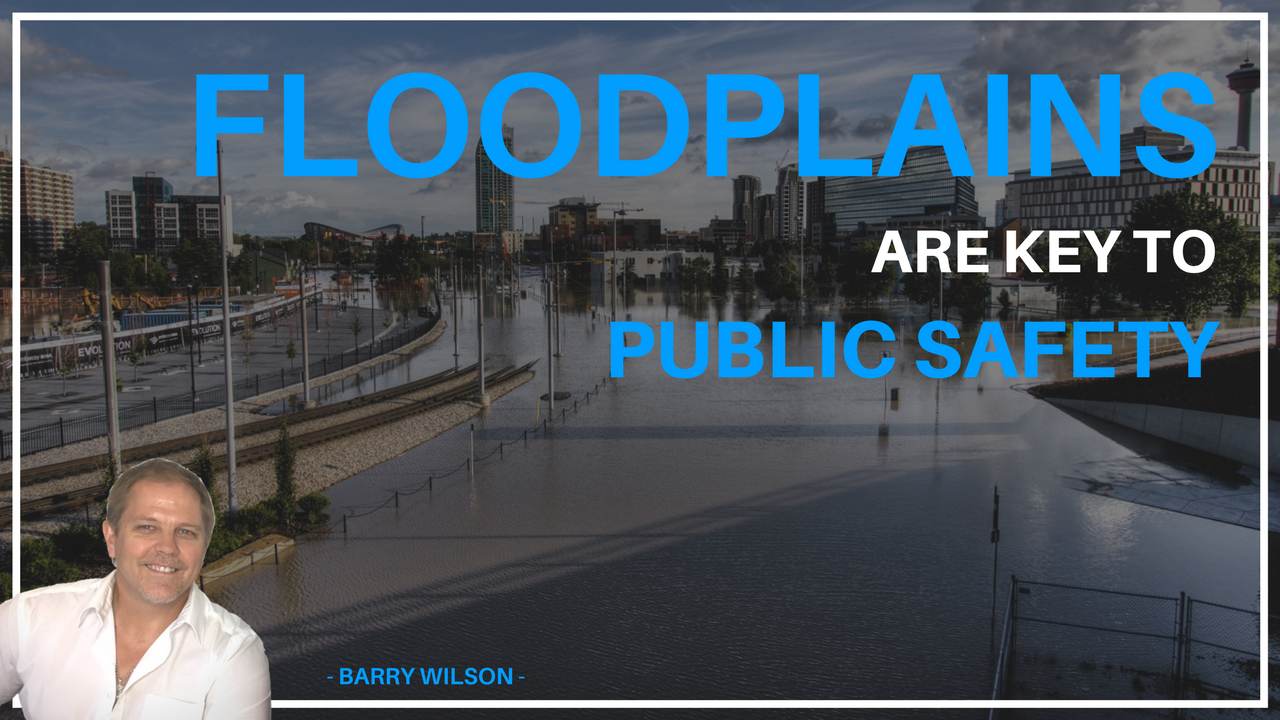
Floodplains Are Key To Public Safety
Oct 25, 2016Reports of human loss and suffering from flooding are reported at least weekly, if not nightly, in mainstream media. And while the axiom “if it bleeds it leads” may heighten our perception of how bad it is, the impacts of floods on people and their homes is on the rise. According to the report Cities and Flooding [1] commissioned by the World Bank, the 10-year moving median # of reported flood events is rising steadily and is a full 16 times higher in 2010 than 50 years earlier.
But floods are nothing new. Rather, they are natural events that have been happening for millennia, shaping the earth we live on and creating much of the natural bounty that supports us today.
Still, we villainize nature when she brings us harm. Floods, like wildfires, have gotten a very bad name because of the harm to people we associate with these events. But Mother Nature is not the problem. Dr. Gilbert White, the late founder of the internationally recognized Natural Hazards Center in Boulder Colorado put it well, “Floods are acts of nature; but flood losses are largely acts of man.” We must take heed to this wisdom as we plan for resilience – especially in light of climate change.

Increasing flood frequency, human suffering and capital losses are some of the negative cumulative effects of historic and current human land use practices in our watersheds. While we have been working very hard to re-shape the earth to suit our desires, the consequences of many decisions we thought would improve our lives are resulting in unintended consequences because we have failed to think holistically about the watersheds we live in. They are interdependent systems. In our desire to engineer solutions to control the land, rivers and nature, we end up degrading the very components of those systems that could keep us safe and resilient into the future.
Perhaps most notable are the insults we inflict on river floodplains. In our zeal, or perhaps arrogance, to try and ‘tame’ our rivers, we submerge floodplains under deep reservoirs created by dams, we build our settlements and industrial manufacturing facilities on them, we mine floodplains for gravel and we drain and cultivate them for ‘modern agriculture’. As an example, according to Syilx, (Okanagan Nation Alliance), 96% of the historic riparian floodplains in the Okanagan valley of British Columbia Canada are ‘gone’. Many people think of river floodplains as simply the areas beside a river where water would go if it spilled over its banks. This narrow view has emerged because we have grown accustomed to engineering our rivers, to straighten them out and prevent them from overtopping their banks.
“floodplains are a vital part of the river, not an area adjacent to the river. If you don’t believe that, sit on a floodplain long enough and you’ll realize you are in the river.” Dr. Stanley Gregory of Oregon State University
Natural, functioning floodplains are actually one of nature’s most impressive structures that naturally provide us with huge benefits. Without any effort from humans, floodplains can control and reduce flooding, reduce erosion, improve surface water quality, increase biological productivity, recharge groundwater aquifers, provide temporary cold water storage for release into the river in late summer when flows are low and water temperatures can get too high for fish. They provide for the harvest of both wild and cultivated products and yield a steady stream of cultural, aesthetic and recreational use values.

These natural benefits we get from floodplains are in severe decline today largely because of human alteration and land use. And yet these important natural buffers could be a major part of the solution for our future safety and resilience as we try to adapt to a world increasingly influenced by climate change.
Holistic land use planning at a watershed scale could be vital to our success. In her presentation to the “Future Of Our Salmon – Healthy Floodplains, Healthy Rivers” Conference in Portland Oregon last week, Mary Lou Soscia of the US EPA provided some excellent guidance on the key planning elements needed:
- Incorporating Tribal and/or First Nation stewardship principles that a river is dynamic, and shaped not only by physical and biological processes, but the interactions and interconnections between those processes,
- Managing resources and planning on a watershed basis,
- Permanently restoring and preserving flood-prone areas as open space through land acquisition,
- Improving land use planning and regulation by using incentives for restoration of floodplain ecosystem function, avoiding developing high risk areas, mapping the future - not yesterday’s flood and rewarding those who reduce flood risk,
- Modernizing flood risk management for ecosystem functions by halting or minimizing new development in floodplains and wetlands, reconnecting streams with floodplains and increasing opportunities or incentives for development of conservation projects, and
- Actively designing floodplains to address both flood protection and ecosystem services
When it comes to natural systems, it certainly is more expensive to fix something you have broken than it would have been to protect it in the first place. But, continuing with Business As Usual and not taking these actions will mean the human costs of natural disasters will continue to increase at an unprecedented rate, far surpassing the cost of investing back to holistic watershed management today.
[1] Cities and Flooding, A Guide To Integrated Urban Flood Risk Management For The 21st Century; The World Bank 2012ty

